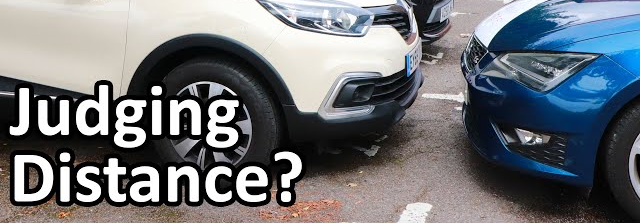 The RCMP's advanced driver training course was without a doubt the most fun of any course many of the participants had taken in their service. What the majority of the course taught us was to be aware of the location of all four corners of our vehicle in relation to everything around us on the track.
The RCMP's advanced driver training course was without a doubt the most fun of any course many of the participants had taken in their service. What the majority of the course taught us was to be aware of the location of all four corners of our vehicle in relation to everything around us on the track.
We used an inactive runway at the Boundary Bay airport in Delta and a collection of well used Crown Victoria police interceptors to polish our driving skills. Contrary to what you might think, this was not a high speed driving situation as we never got going faster than about 65 km/h.

Cones and Vehicle Corners
From stall parking, backing through a slalom to the collection of curves, straights and sharp angles of the circuit, the object was to never touch one of the traffic cones that marked the edges and obstacles.
Knock one over and you could lose so many points that your score would not be enough to pass.
Spinning Tires Loses Time
In the circuit, we were expected to drive as fast as we were able to in addition to leaving all the cones alone. We also learned that if you spun your tires after receiving the "go" signal, you lost valuable time.
Maintaining Lane Position
The road that leads to my home is a winding one and there are two sets of reversing curves where I seem to be meeting more drivers on the wrong side of the double solid centre line lately. The worn condition of the centre and shoulder lines at these corners indicate that this occurs frequently.
Suprisingly, our provincial driving manuals don't have a lot to say about maintaining your lane position. The one piece of advice that I could find says:
The first thing you may notice as you begin driving in moderate traffic is that you have to stay in the centre of your lane. To start with, this is no easy task. The magic rule: look the way you want to go. If you keep looking 12 seconds ahead down the centre of the lane, your peripheral vision will help you centre yourself.
Turning at Intersections
They do have more to say about another spot where lane discipline commonly breaks down, turning at intersections. Drivers are cautioned not to cut the corner or swing wide on turns.
Stay off the Shoulder
The last bad habit to mention is driving with the right side tires to the right of the single solid line. In other words, driving on the shoulder. Along with all of the other behaviours mentioned, this is illegal.
Stay on Your Own Half of the Road
One might think that if there are no lines painted on the road, it is not necessary to maintain proper lane position. This is not true either. A driver in this situation must still judge where the center of the road is and travel in the right hand half.
Share This Article
Way too many people are crossing the centre line and driving in the shoulder in curves. This is especially dangerous to motorcyclists. I hope there will be some sort of enforcement done about this. Glad to see some education being done at least.
- Log in to post comments
One of the first things I was taught when I started to drive was know where your wheels are. Over the years I have taught a few and what I like to do is get them into an area where we can put out obstacles that they have to hit. Rather than missing the cones I want to see that they can hit the object going both forward and back and at a good speed.
This is especially important on back road driving. Being off just a few cm. is the difference between being on the road in the ditch, hung up or wrapped around the bumper of a logging truck.
I also feel it is important to be able to back up similar to what was described in the article but using your external mirrors.
Everytime I go to town I have two cattleguards to drive over. They are equipped with wide running rails but it is interesting to see how many miss them or the ones driving longer vehicles can get the front on but failed to know where their rear wheels track.
Could it be that in B.C. we can go back to the section quoted in the ICBC Manual about looking ahead and staying between the lines rather than looking ahead and knowing exactly where your vehicle fits on the road. I think we are too fixated on pointing it down the road rather than driving it down the road.
- Log in to post comments
- Log in to post comments

I Agree